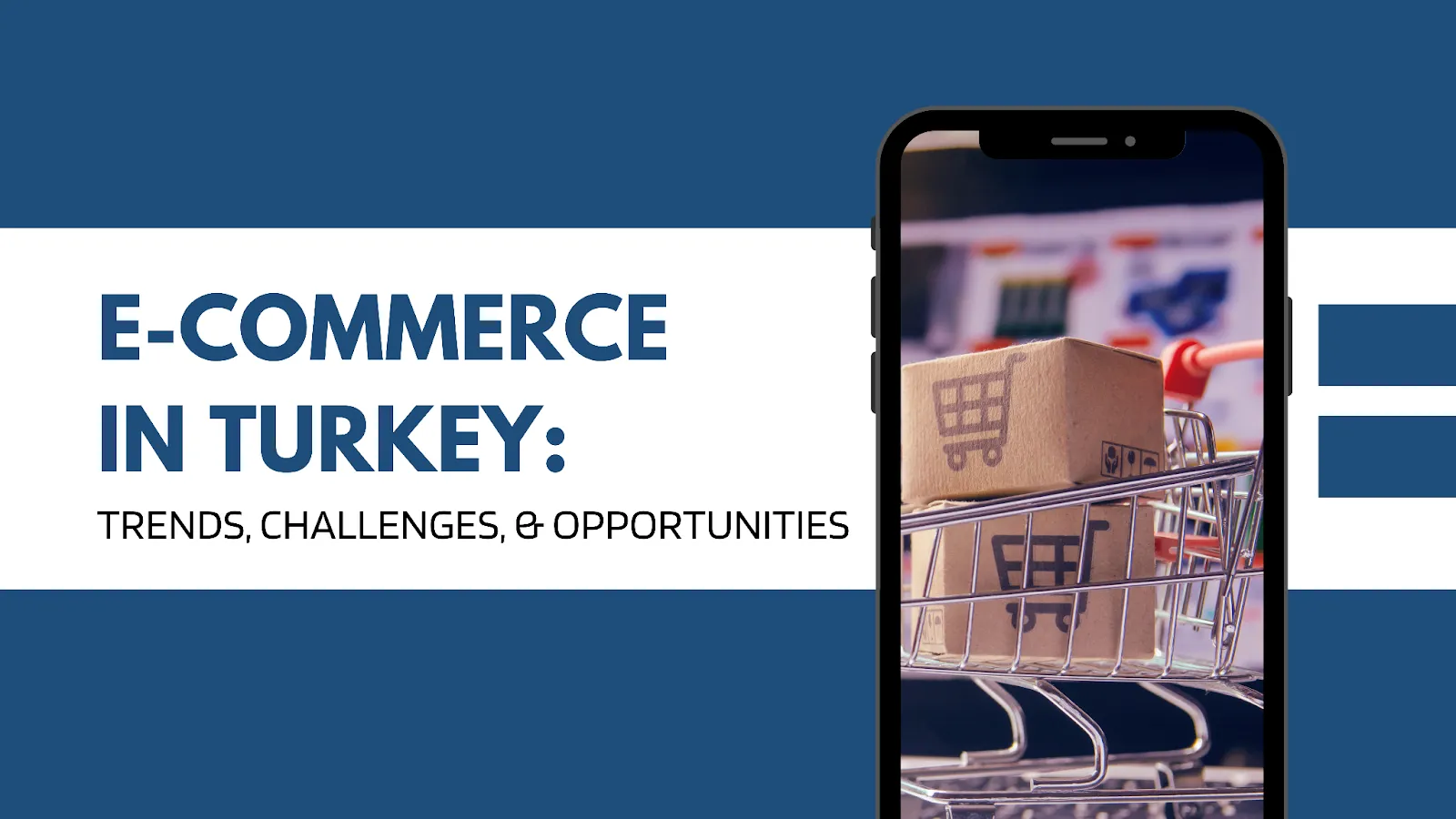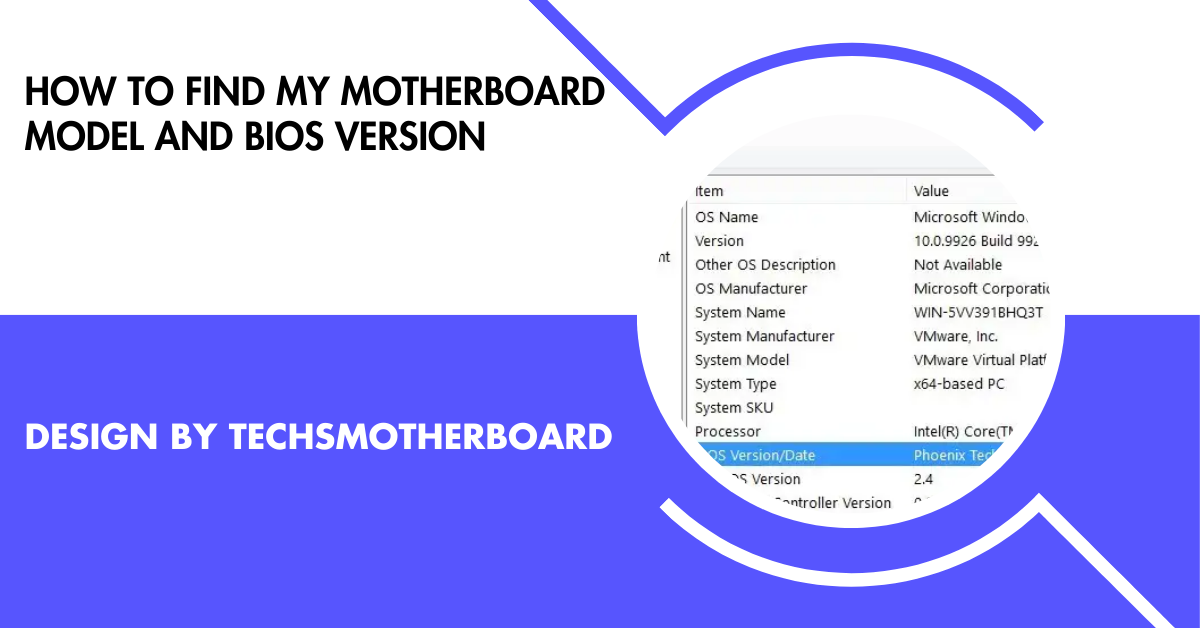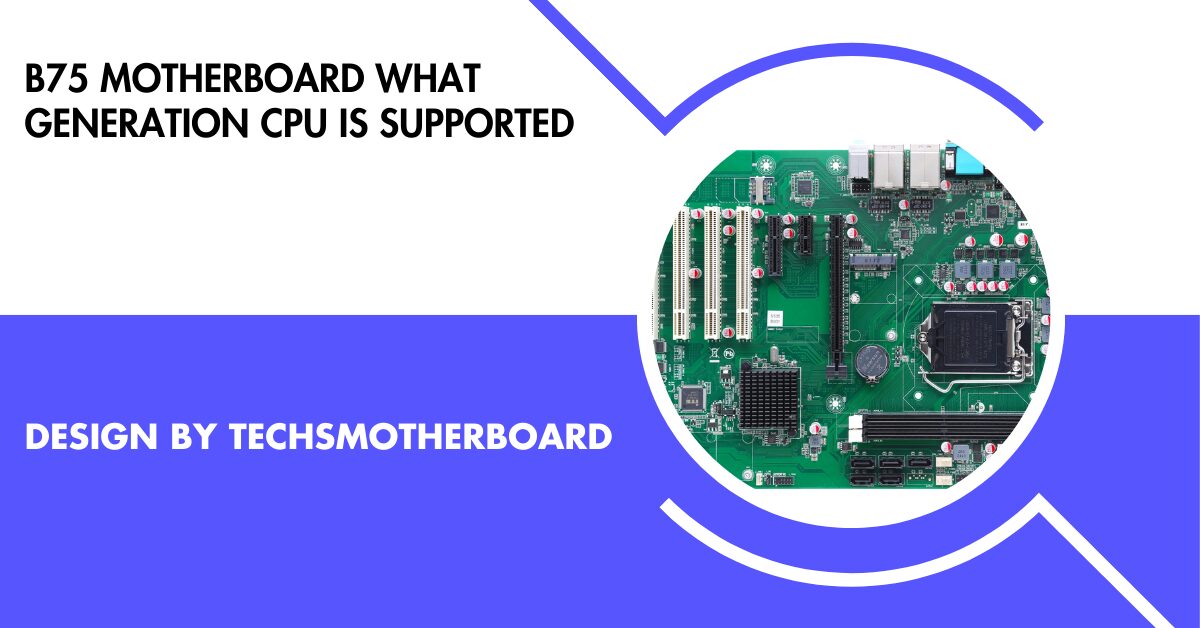Business
E-Commerce in Turkey Trends, Challenges, and Opportunities in 2025

E-commerce in Turkey has witnessed a meteoric rise in the past decade, driven by increased internet penetration, a young tech-savvy population, and strong mobile usage. As of 2025, the Turkish e-commerce market is no longer in its infancy—it is booming, competitive, and full of potential for both local and international businesses.
This blog explores the current state of e-commerce in Turkey, key growth sectors, legal and tax considerations (including KDV), consumer behavior, and the opportunities and challenges faced by digital businesses in the region.
The Growth of E-Commerce in Turkey
Turkey’s strategic position bridging Europe and Asia, combined with its youthful population (with a median age of around 33), has made it an ideal ground for digital commerce.
According to data from the Turkish Statistical Institute (TÜİK), e-commerce in Turkey grew by over 50% between 2019 and 2024, and is expected to reach $60 billion USD in value by the end of 2025. This growth has been fueled by:
- Mobile-first internet usage
- Improved logistics and payment systems
- Government support for digital transformation
- Increased trust in online payments
Popular marketplaces like Trendyol, Hepsiburada, N11, and Amazon Turkey dominate the market, while many niche e-commerce sites continue to emerge in fashion, electronics, groceries, and B2B services.
Consumer Behavior in the Turkish Online Market
Turkish consumers are price-sensitive, digitally engaged, and often prefer local platforms. Here are some key insights into buyer behavior:
- Mobile usage: Over 70% of online shopping is done via smartphones.
- Payment preferences: Credit cards and installment payments are very common. Digital wallets like Papara and Paycell are gaining popularity.
- Trust factors: Turkish consumers prioritize secure payment options, return policies, and fast shipping.
- Shopping categories: Fashion, electronics, home goods, and cosmetics are among the top-performing sectors.
Legal and Tax Regulations for E-Commerce in Turkey
If you’re planning to start or expand your e-commerce business in Turkey, understanding the legal and tax landscape is crucial.
Key Legal Requirements:
- Register a business: You must operate under a registered entity to sell online legally.
- ETBIS Registration: E-commerce businesses must register with the Electronic Trade Information System (ETBIS).
- KVKK Compliance: Similar to GDPR, Turkey’s KVKK (Personal Data Protection Law) governs how customer data must be handled.
Understanding KDV (Turkish VAT):
In Turkey, KDV (Katma Değer Vergisi) is the equivalent of VAT (Value Added Tax) and plays a significant role in e-commerce operations.
- The standard KDV rate is 20%.
- Some sectors, such as basic food and printed books, enjoy reduced rates (1% or 10%).
- Businesses are required to calculate and include KDV in their invoices and pay it to the tax authorities monthly or quarterly.
To simplify tax calculations, many Turkish businesses use tools like kdvhesap.net — an easy-to-use online KDV hesaplama that helps vendors quickly compute VAT-inclusive or exclusive prices.
E-Commerce Logistics and Delivery Infrastructure
One of the key drivers of Turkish e-commerce success is the advancement in logistics and delivery systems. Companies like Yurtiçi Kargo, MNG Kargo, Aras Kargo, and PTT offer nationwide coverage, while startups like Getir and Trendyol Go are redefining same-day delivery, especially for groceries and fast-moving items.
Moreover, international couriers like DHL, UPS, and FedEx are widely available, supporting cross-border commerce for export-focused businesses.
Digital Payment Ecosystem
Turkey boasts a high rate of credit card ownership, and digital payment solutions are evolving rapidly. Common online payment gateways and services include:
- iyzico (a local PayPal alternative, popular among SMEs)
- PayTR
- Papara
- Turkish banks’ virtual POS systems (e.g., Garanti BBVA, Akbank)
Installment-based payments are especially attractive in Turkey, allowing customers to spread their payments over multiple months without extra fees.
Opportunities in the Turkish E-Commerce Market
E-commerce in Turkey is ripe with opportunities for:
A. Niche Stores
Turkish consumers appreciate local, authentic, and specialized products. Creating niche stores in categories like eco-friendly goods, traditional crafts, or smart home gadgets can perform well.
B. Cross-Border E-Commerce
Thanks to customs reforms and agreements with the EU and other countries, Turkey is also a manufacturing hub for export. Businesses can produce and ship from Turkey efficiently to Europe, Asia, and the Middle East.
C. SaaS and Digital Services
With digitalization on the rise, SaaS businesses targeting Turkish SMEs—especially tools related to invoicing, accounting, or tax (like KDV calculation)—are in demand.
Challenges to Consider
Despite the growth, some challenges remain:
- Economic volatility: Inflation and currency fluctuations can affect consumer purchasing power.
- Intense competition: Major platforms dominate with aggressive pricing and marketing budgets.
- Regulatory complexity: Tax rules and legal compliance (especially for foreign businesses) require careful attention.
- Cybersecurity concerns: As with all digital markets, data security and fraud prevention remain priorities.
The Future of E-Commerce in Turkey
Looking ahead, the Turkish e-commerce market will likely continue to evolve through:
- AI-driven personalization
- Voice and visual search integration
- AR/VR for product previews
- Sustainability-focused logistics and packaging
Government initiatives supporting digital transformation and the growth of fintech solutions will further encourage small businesses and entrepreneurs to go online.
Final Thoughts
E-commerce in Turkey is vibrant, dynamic, and full of promise for those willing to navigate its unique challenges. Whether you’re a local entrepreneur, a global retailer, or a software developer, understanding Turkish consumer behavior, payment culture, legal framework, and tax systems (especially KDV) is essential.
By using tools like KDV Hesaplama, investing in reliable logistics, and providing localized customer experiences, you can successfully tap into one of the most exciting e-commerce markets in the region.
Business
From ‘For Sale’ to ‘Sold’: A Live Timeline of Home Transactions

Selling a home is a journey with clearly defined stages, but each step can come with both excitement and uncertainty. By understanding what’s coming next, sellers can set realistic expectations, minimize surprises, and confidently navigate the process. For those entering the vibrant local market, partnering with West Hartford CT real estate agents The Connecticut Agency LLC can provide valued expertise and supportive guidance from the very beginning.
Homeowners embarking on a sale often find that having a strategic approach eases their transition and can maximize their returns. Clear planning, effective communication, and knowing when to seek professional help are foundational to a stress-free experience. As you move from preparing your home to closing the deal, each phase brings distinct actions and opportunities to enhance your success.
This comprehensive guide breaks down the live timeline of home transactions, arming sellers with the knowledge to make informed decisions at each milestone.
Whether you’re selling your house for the first time or are a seasoned mover, understanding this process is essential to getting from “for sale” to “sold” smoothly.

Preparing the Home for Sale
Presentation is one of the most powerful tools a seller can use. Begin by decluttering every space, making necessary repairs, and adding curb appeal. A home that’s clean, neutral, and well-cared-for will stand out in photos and in person. Minor upgrades, such as a fresh coat of paint, updated lighting, or landscaping, can also deliver a strong first impression to potential buyers.
Professional staging services are also an option, allowing your home to be showcased at its very best. According to the National Association of Realtors, 82% of buyer’s agents said staging made it easier for their clients to visualize their prospective home, often resulting in faster and higher offers.
Listing the Property
With your home ready to shine, it’s time to list it on the market. Determining the right asking price is critical—a property priced too high can linger, while one too low might leave money on the table. A market analysis with input from a skilled agent ensures your price is both competitive and realistic. High-resolution photography and a compelling, honest description of the home’s features and benefits help capture interest and set your listing apart.
Partnering with a local real estate expert means leveraging deep market knowledge, effective negotiation skills, and professional marketing resources that may not be accessible to homeowners alone.
Marketing and Showings
Exposure is key to generating interest and offers. A combination of online listings, social media campaigns, email marketing, open houses, and signage draws attention to your property. Scheduling private showings allows prospective buyers to explore the home, ask questions, and envision how it fits their needs.
Flexibility during this phase is crucial—accommodating last-minute showing requests or weekend open houses ensures you don’t miss motivated buyers. Regular communication with your agent can also help you adapt marketing strategies as needed to maximize traffic.
Receiving and Negotiating Offers
With interest established, offers may begin to arrive. Each offer will contain specifics on price, conditions, closing dates, and other terms. Evaluate all the details, not just the dollar amount—sometimes a slightly lower offer with fewer contingencies or a faster closing can be the best choice. Negotiations often follow, involving counteroffers and clarifications. Successful negotiations typically require collaboration and realistic expectations from both sides, aiming for a win-win situation and a swift agreement.
Under Contract and Due Diligence
After an offer is accepted, the property moves into the “under contract” stage. This is when buyers do their due diligence, which may include home inspections, appraisals, and securing financing. Inspections can uncover issues leading to further negotiations or repair requests. The appraisal confirms the property’s value for the lender; if it comes in lower than the agreed price, renegotiation may be required. Staying responsive and flexible throughout this phase can prevent delays and complications.
Closing the Sale
The closing process finalizes the transaction. During this period, both parties review and sign numerous documents, title searches are conducted, and funds are transferred. Common participants include real estate agents, attorneys, title companies, and lenders. Ensuring all contingencies are satisfied—and being prepared to quickly resolve last-minute issues—will help you reach this goal. On the day the keys are handed over, your home is officially sold.
Business
From On-Prem to Cloud: How SASE Simplifies Security for Hybrid and Remote Workforces
A Shift in the Modern Workforce
The dramatic evolution of work environments in recent years has pushed organizations to adapt to new modes of operation rapidly. With remote and hybrid work models moving from an emergency solution to a long-term strategy, IT teams face increasing pressure to deliver secure access to data and applications across varied locations and devices. SASE network security has emerged as a leading solution, enabling organizations to address these challenges with a unified, cloud-first approach that follows the user, wherever work occurs.
As many organizations embrace flexible work arrangements, the traditional boundaries of the enterprise network have all but vanished. Employees tap into corporate resources from home offices, coworking spaces, and on the go—often relying on personal devices or insecure connections. This paradigm shift has compelled organizations to reassess their approach to protecting critical assets and controlling user access beyond the confines of an office, making holistic security more crucial than ever.
Traditional Security Models Struggle to Keep Pace
Classic perimeter-based security solutions, such as firewalls, VPNs, and network access controls, were designed for centralized office environments. As workforces grow more distributed, these tools become increasingly ineffective. Data flowing far outside company walls and traffic between cloud applications all challenge the effectiveness of on-premises security architectures. VPN solutions, once a mainstay of remote work, now struggle under demanding workloads, offer inconsistent user experiences, and introduce vulnerabilities when not well managed. According to an analysis by CSO Online, companies relying solely on traditional defenses face higher risks of data breaches and limited visibility over their environments.
What Makes SASE Different?
Secure Access Service Edge (SASE) fundamentally reimagines security and networking for today’s needs. By unifying advanced networking functions, such as SD-WAN, with cloud-delivered security, including firewall-as-a-service, secure web gateways, and zero-trust network access, SASE creates a holistic defense perimeter anchored in the cloud. Security policies and access controls are not limited by physical location, but rather by context, including user identity, device security posture, and real-time risk assessment. This enables organizations to provide secure, optimized access to resources, regardless of where employees or workloads reside.
Simplified Access and Security for Every User
Zero trust is at the core of the SASE model. Instead of inherently trusting devices or users simply because they connect from inside the network, SASE evaluates each interaction. This principle is especially effective for organizations with employees moving between multiple environments. Every application request is fully authenticated and authorized before access is granted. It ensures consistent enforcement of security policies, regardless of whether an employee is connecting from the corporate office, a hotel room, or a coffee shop. Workflows remain seamless, user experiences remain fast and reliable, and sensitive data stays protected everywhere.
Real-World Benefits of SASE for Hybrid Teams
Adopting a SASE framework yields tangible results for organizations managing hybrid and remote workforces. Companies report increased visibility into user activity and network traffic, which enhances their ability to track threats and respond to incidents swiftly. Policy management becomes far simpler, as security and networking configurations are handled through a single, central dashboard—allowing global rule enforcement and streamlined auditing. The risk of exposure to new vulnerabilities is minimized through ongoing threat intelligence updates, patch management, and automated response capabilities. Gartner research has highlighted that SASE helps IT teams deliver improved cloud application performance—critical for productivity when access happens from virtually anywhere.

Streamlining Compliance and Reducing Overhead
SASE simplifies compliance for organizations facing evolving regulatory landscapes. Instead of juggling multiple point solutions for data loss prevention, firewall management, and identity protection, IT teams can implement and prove controls from a consolidated interface. This unified foundation makes tasks like policy enforcement, user auditing, and evidence collection easier and less time-intensive, which in turn reduces the risk of fines and helps demonstrate ongoing regulatory compliance in sectors like healthcare, finance, and retail.
Key Features to Consider When Evaluating SASE Solutions
- Integrated Security: Choose platforms that offer robust threat protection, data loss prevention, and secure web gateways in a single solution.
- Scalability: Prioritize cloud-native architectures that dynamically adjust to your organization’s changing needs—supporting small teams or thousands of new endpoints efficiently.
- Zero Trust Support: Ensure the solution implements strict authentication and granular access controls based on real-time user and device context.
- Performance Optimization: Look for global presence, intelligent routing, and bandwidth management that keep cloud applications responsive for all users.
- Centralized Visibility: A single-pane-of-glass dashboard should deliver clear insight into all traffic and security events, simplifying monitoring and remediation efforts.
Steps to Get Started with SASE
- Assess Your Current Architecture:Catalog legacy systems, workflow gaps, and security pain points in your existing environment.
- Define Your Security Policies:Document clear, risk-based guidelines for application access, device trust levels, and incident response procedures.
- Choose the Right Partner: Select SASE vendors that align with your security standards, offer proven performance, and deliver responsive support.
- Pilot and Expand: Launch an initial rollout with a group of users, gauge outcomes, and systematically scale implementation based on feedback and results.
The Future of Secure Access for Distributed Workforces
The transition from on-premises security to cloud-first models is rapidly accelerating. SASE not only meets the current needs of hybrid and remote workforces but also positions organizations to stay ahead of future threats. By providing secure, agile, and scalable access to organizational resources—regardless of location—businesses can embrace new ways of working while safeguarding their critical data. As hybrid work establishes itself in the business landscape, rethinking security through the lens of cloud-based SASE solutions is becoming a crucial competitive advantage.
Business
The Benefits of Working With a Wealth Planner for Long-Term Success

Financial planning services help individuals and business owners effectively manage their assets throughout their lifetime. An experienced financial planner assesses your current financial situation to determine investment strategies that align with your goals. Here are some benefits of working with a wealth planner for long-term success:
Investment Management
Professional planners help affluent individuals and companies invest in the right sectors by reviewing market trends and investment opportunities. They can advise you on where to allocate your funds, including stocks, bonds, or real estate, to help increase your assets. As markets change, a wealth planner reviews your portfolio to determine whether it matches your goals. These experts can adjust your holdings by suggesting you sell or buy stocks based on your risk tolerance. If you want to build an education fund or preserve your capital, financial advisors work with you to manage risks while maximizing profit.
Tax Planning
With higher incomes and complex investment portfolios, tax laws often become more challenging to navigate. Wealth planners help identify areas where taxes may be minimized, such as through charitable giving for individuals and families. If you own a business, an advisor can help you choose the right structure, such as a limited liability company, which offers tax advantages. Placing your assets in the right accounts helps reduce your tax liability each year and grow your wealth over time. If you’re planning to sell your business or pass it on, a professional can establish a trust to streamline the transfer and minimize fees.
Estate and Trust Planning
Once you’ve generated significant wealth, financial planning services help protect what you’ve built and pass it on to the next generations. Some key estate planning options include:
- Trusts: If you own a business and other assets, trusts can safeguard them from taxes, lawsuits, and creditors who would otherwise deplete your wealth.
- Wills: With the right estate plan, transferring wealth to your loved ones often results in fewer disputes and losses. It helps determine who receives what, when, and how, according to your wishes, once you pass away.
- Charitable giving: Financial planners also help you support local organizations through charitable trusts, foundations, or donations.
Retirement Income Planning
Whether you have investment accounts, pensions, or savings, a wealth manager helps you plan your retirement income. They review these assets to create a financial plan that aligns with your lifestyle and maximizes your financial returns. To keep the money working for you, wealth planners suggest withdrawing or investing in accounts at specific times to maximize revenue.
A cash flow analysis helps financial advisors understand your monthly expenses and your income sources. This allows them to recommend a suitable savings plan or investment opportunities. When claiming benefits from Social Security and pensions, they provide information about beneficial times to begin receiving payments.
Get Started With Financial Planning Services
A wealth planner helps you prepare for retirement, allocate funds well, and manage different risks. To protect your assets and distribute them when the time comes, these professionals create several legal documents. If you’re looking to manage your wealth, call a trusted company today to learn more about their financial planning services.
-

 Tech6 months ago
Tech6 months agoSotwe STW Explained How a Radical Platform is Redefining Online Expression
-

 Entertainment8 months ago
Entertainment8 months agoHow Do I Turn On the Beatbot?
-

 Motherboard Guide1 year ago
Motherboard Guide1 year agoAre B750 Motherboard A Good Choice – A Complete Overview!
-

 Blog1 year ago
Blog1 year agoHow To Find My Motherboard Model And Bios Version – A Detailed Overview!
-

 Motherboard Guide1 year ago
Motherboard Guide1 year agoAre Gigabyte Motherboards Good – A Comprehensive Review!
-

 Blog3 months ago
Blog3 months agoHer Love Is A Kind Of Charity Password – The Hidden Meaning Behind the Phrase!
-

 Motherboard Guide12 months ago
Motherboard Guide12 months agoB75 Motherboard What Generation Cpu Is Supported – B75 Motherboard Cpu Support!
-
Motherboard Guide4 months ago
The Ultimate Croatia Travel Guide for First-Timers: Everything You Need to Know Before You Go

